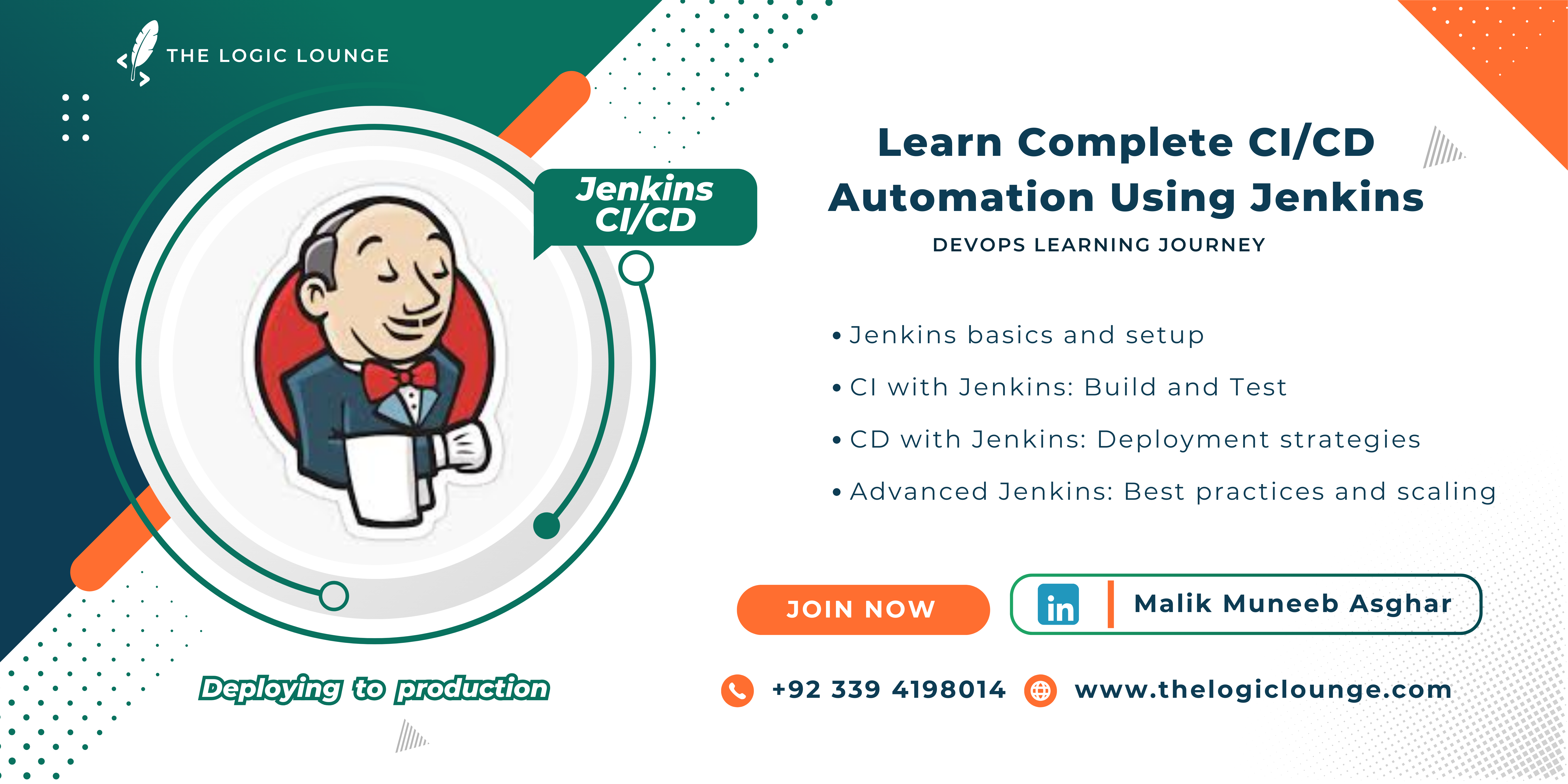Week # 07: DevOps Learning Journey - Mastering Jenkins: A Comprehensive Guide to CI/CD
 Malik Muneeb Asghar
Malik Muneeb Asghar
Introduction
- In this introductory, we lay out the foundation of what the course will cover, focusing on Jenkins as a powerful automation tool for continuous integration and continuous deployment (CI/CD).
What is Jenkins?
- Jenkins is an open-source automation server that facilitates the automation of tasks related to building, testing, and deploying software. This section delves into its significance in modern DevOps practices, enabling teams to achieve rapid and reliable software delivery.
Jenkins Installation
- Step-by-step guide to installing Jenkins on your local machine. Whether you're using Windows, macOS, or Linux, this part ensures that you have a running Jenkins instance ready to manage your automation needs and we will install jenkins using docker(In isolated environment).
Your First Jenkins Job
- After installation, it’s time to create your first Jenkins job. This tutorial walks you through the process of setting up a simple job that automates a task, giving you a practical taste of Jenkins in action.
Continuous Integration (CI) with Jenkins
Introduction to CI
- Continuous Integration (CI) is a fundamental DevOps practice where developers frequently merge their code changes into a shared repository, followed by automated builds and tests. This lecture introduces the concept and its importance in maintaining code quality and reducing integration issues.
Creating a GitHub Account
- To leverage Jenkins for CI, you need a version control system. This lecture covers setting up a GitHub account, where your code repositories will reside.
Project Overview
- We introduce the sample project that we'll be automating with Jenkins, giving you a clear understanding of what to expect and how the pieces fit together in the CI/CD pipeline using netlify as well.
Using Docker as a Build Environment
- Docker provides a consistent environment for your builds, independent of the underlying infrastructure. This blog teaches you how to configure Jenkins to use Docker, ensuring that your builds are reliable and reproducible.
Workspace Synchronization
- Synchronizing workspaces is crucial for ensuring that Jenkins can access the latest code changes. This part covers how Jenkins syncs with your GitHub repository, pulling the latest code for building and testing.
Using a Git Repository
- Jenkins integrates seamlessly with Git repositories. Here, we discuss how to link Jenkins with your GitHub repository, setting the stage for automated builds and tests whenever new code is pushed.
Building the Project
- The core of CI is building the project. This lecturehow Jenkins automates the build process, ensuring that the code compiles correctly and is ready for deployment.
Running Tests
- Automated testing is vital for catching bugs early. Learn how to configure Jenkins to run tests on your project, providing immediate feedback on the health of your codebase.
JUnit Test Report
- Jenkins can generate detailed reports on your test results. This section covers integrating JUnit with Jenkins, enabling you to visualize the test outcomes and track the quality of your project over time.
Continuous Deployment (CD) with Jenkins
Introduction to CD
- Continuous Deployment (CD) takes automation a step further, automatically deploying every change that passes the CI pipeline into production. This lecture introduces the concept, highlighting its role in rapid, reliable software delivery.
Manual Deployment
- Before fully automating deployments, it's essential to understand the manual process. This lecture walks through deploying an application manually, laying the groundwork for automation.
Installing CLI Tools
- Command-line tools are crucial for automating deployments. Here, we cover the installation of necessary CLI tools that Jenkins will use to manage deployments.
Environment Variables
- Environment variables play a key role in configuring your deployments. This section discusses how to set up and manage environment variables within Jenkins, ensuring that your deployment process is flexible and secure.
Managing Secrets
- Security is paramount in any deployment process. Learn how to securely manage secrets like API keys and passwords within Jenkins, preventing unauthorized access to sensitive information.
Using Credentials in the Pipeline
- This lecture builds on the previous one, showing how to integrate credentials into your Jenkins pipeline securely. By doing so, you can automate deployments without exposing sensitive data.
Deploying to Production
- Finally, we bring everything together, demonstrating how to automate the deployment of your application to a production environment using Jenkins. This lecture covers best practices for ensuring a smooth, reliable deployment process.
Conclusion
This Jenkins blog is your gateway to mastering CI/CD, the backbone of modern DevOps practices. From setting up your first Jenkins job to automating complex deployment pipelines, this blog covers everything you need to know to become proficient in Jenkins.
Whether you’re a beginner or an experienced developer, this guide will enhance your skills and prepare you to tackle real-world DevOps challenges.
Subscribe to my newsletter
Read articles from Malik Muneeb Asghar directly inside your inbox. Subscribe to the newsletter, and don't miss out.
Written by

Malik Muneeb Asghar
Malik Muneeb Asghar
Tech fanatic with a passion for problem-solving and cloud services. Expertise in React, Angular, Express, Node, and AWS. Tech visionary with a knack for problem-solving and a passion for cloud services.